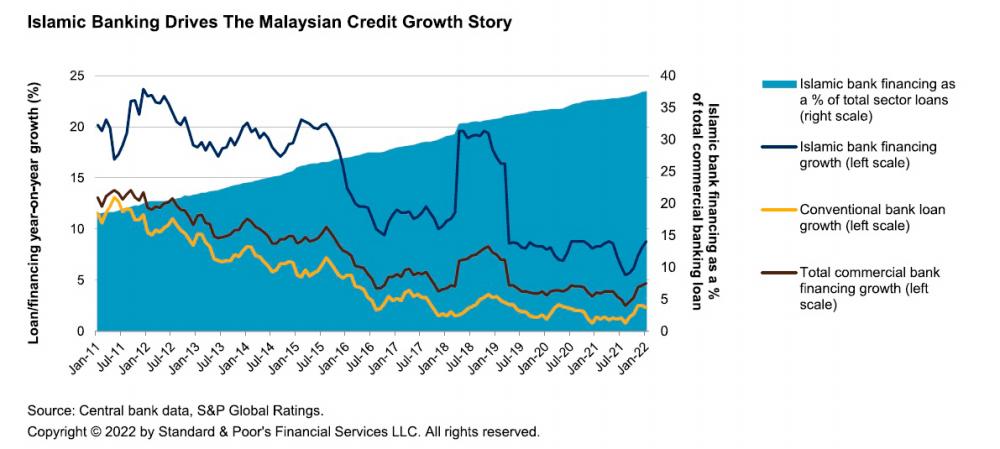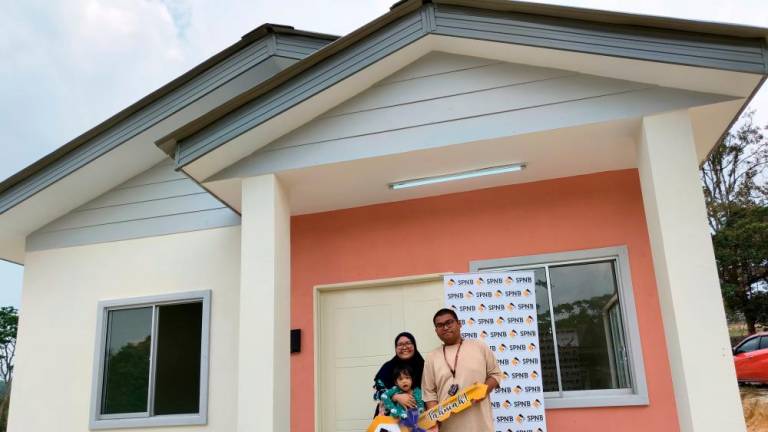PETALING JAYA: S&P Global Ratings has forecast Malaysian Islamic banks to grow at a compound annual growth rate of 6-8% over the five-year period of 2022-2026, which means local Islamic banks could account for close to 45% of the overall commercial banking loan book by the end of 2026, up from 37.5% in January 2022.
“That said, short-term headwinds may hinder the recovery in loan growth. This is because of Islamic banks’ retail and SME-focused portfolios, which will recover gradually from the pandemic following the economic trends. Like their conventional peers, the portfolio of Islamic banks is tilted more toward mass-consumer banking and SME, and less toward large corporates, which fulfill a large part of their financing needs through capital market borrowings. This skew could mean a slower rebound of loan growth in 2022 and a need to maintain elevated credit costs for longer,” S&P said in a report today.
The credit rating agency said the Malaysian Islamic banking sector remains highly attractive. It has promising long-term growth potential, which is supported by the country’s favourable policy environment, a vigorous and innovative industry landscape, and local banking groups’ “Islamic first” business strategy. However, it noted that the recovery from Covid-19 among the Islamic banks in Malaysia has so far been uneven.
“We expect that the polarisation in the Islamic banking system will persist, and the performance of small lenders will continue to pale compared the top-tier Islamic banks affiliated with large local banking groups. For example, the largest five Islamic banks namely Maybank Islamic, CIMB Islamic, RHB Islamic, Public Islamic, and Bank Islam (BIMB), have reported a steady recovery back to pre-pandemic profitability in 2021. All except BIMB are Islamic banking subsidiaries of large conventional banking groups. At the other end of the spectrum, small players especially foreign-owned ones, are still struggling to regain their footing. They have reported moderate net profits in the past year and in some cases a loss.
“Large Malaysian Islamic banks aren’t out of woods just yet. Our view on local Islamic banks is like the one we have on their conventional parents. That is, the benign reported asset quality numbers of local Islamic banks don’t reflect the real picture. This is because of the distortion and delay caused by the multiple suspensions of loan repayments and restructurings since the beginning of the pandemic.”
In fact, S&P said Islamic banks may well take a bigger hit from Covid-19 because of their retail-focused business profile and inflexibility to adjust for interest rates for relief loans. As of February 2022, 52.7% of Islamic banks’ financing book comprises retail lending, for example, hire purchases, personal loans, and mortgages; whereas their conventional counterparts’ exposure to the same products is about 43.6%. And many Islamic subsidiaries, unlike their conventional banking parents, have a higher portion of their retail portfolio – for instance, hire purchases – contracted at a fixed interest rate. These subsidiaries suffered a proportionally much larger modification loss during the two rounds of six-month blanket moratorium schemes granted to all retail and SME customers. This was especially the case during the 2020 round. In our base case, Malaysia’s Islamic banking sector could see its gross nonperforming loan (NPL) ratio increase by 100 bps in the next 12-24 months – up from 1.3% as of February 2022 – once the various moratorium and relief programs expire in mid-2022.










